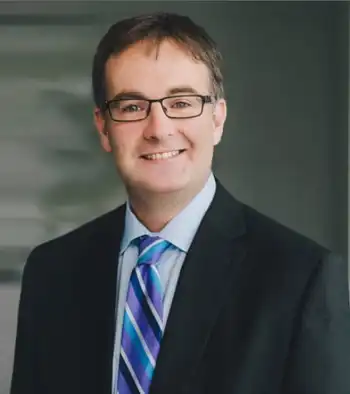Smart grid or green grid?
By David Bassett, IEEE Standards Board
CSA Z463 Electrical Maintenance
Our customized live online or in‑person group training can be delivered to your staff at your location.

- Live Online
- 6 hours Instructor-led
- Group Training Available
We would like to think of the smart grid as a collection of equipment that allows for the operation of an electrical utility grid in a more economical and functional manner while also allowing for the rapid restoration of power to customers during abnormal or emergency conditions. The "green grid" is a logical side effect of the more efficient operation of the grid, resource generation and load control.
The initial implementation of a smart grid will typically result in improved operation of our electrical grid, in terms of voltage control, reactive control and efficiently allocate residual energy, all resulting in a greener grid with savings in power and lower carbon dioxide emissions.
For example, PPL Electric Utilities has a smart grid project that will implement this type of control and is expecting a 2.5% savings in energy use for customers. PPL Electric applied for and won a $19 million Department of Energy federal grant funded by the American Recovery and Reinvestment Act (the Stimulus Bill). The grant was awarded in the Smart Grid Investment Grant funding opportunity, DE-FOA-0000058, and PPL Electric Utilities will partner with Drexel University and technology leaders Alcatel-Lucent, GE Energy and Lockheed Martin to design and install the project.
Our initial implementation will automate the operation of the grid so that faults will not only be de-energized but also isolated, allowing power to be restored faster to customers on non-faulted line sections. The smart grid will actually detect the status of the entire system, allowing the transfer of un-faulted line sections to alternate sources, restoring these customers to service. This requires bi-directional communication to the utility-controlled and -owned equipment, which will allow for the collection of real-time operation data. Assessment of this data will lead to further optimization of the grid.
The additional information collected on the grid, and the additional controlled equipment, will allow for dynamic control of system voltage. This enables optimal service voltage for all customers, ultimately saving energy. Currently the service voltage tends to be set during the installation of the line, with periodic adjustments as loads change significantly. This can lead to some customers having voltage that is higher then necessary while others having lower than optimal voltage. In either case, this can result in energy waste. The current designs tend to have regulation equipment that operates independently. This independent operation, while generally effective, is not optimal.
The initial implementation of a smart grid will typically provide information to the customers, and it is ultimately up to customers to use the information. Therefore it may not yield as much savings as initially expected or predicted. For example, without direct control of customer equipment, the customer must take action to affect savings. There was a recent case where a glowing orb was provided to indicate the cost of power and to signal the customers to cutback. This type of feedback did not work well, presumably because many customers were at work during those times and others did not want to manually adjust their electrical usage or comfort levels.
There is the great opportunity to extend communication to the customer, which will allow direct control of equipment. Some customers may perceive this automatic control as more convenient if they prefer "set-it-and-forget-it" technology. This option will allow for a significant increase in operational efficiencies of the grid. During periods of very high loading, selected loads can be turned off, resulting in cost savings for each load, less carbon dioxide emission and more efficient use of existing facilities. Most utilities plan on cycling the controlled loads. For example, turning loads off for 15 minutes and on for 45 minutes has the potential to produce a 25% load reduction.
Operations that lower the peak loading on the grid will result in making the grid greener. Generation is typically run on a cost basis, with the lowest cost base load units dispatched first, higher cost units like combustion turbine generators next, and then for peak condition the highest cost generation facilities. The lower the cost generation facility, not necessarily the lower carbon footprint, will be dispatched first. As green generation technologies become more efficient and more distributed, smart technologies to allow monitoring and management of bi-directional power flow on the distribution system will be a necessity to integrate distributed systems.
Many utilities will explore time-of-day rates, when electricity is priced according to actual cost. For example during peak hours, such as from 7 a.m. to 7 p.m., electricity may be priced at twice the cost as for the off peak time, 7 p.m. to 7 a.m. The use of time-of-day rates is expected to lower the daytime peak usage. This will lower the amount of generation required to operate. Lowering peak generation usage may have an additional benefit in that the highest cost generation, which is used to cover the peaks, tends to be the least efficient and could have a higher carbon footprint. This is a win–win situation: The utility has lowered load requirement, and the customer gets a lower bill.
As we move forward with new grid infrastructure, there will be innovations in hardware, communications and the overall implementation of a smart system, with all of these leading to an optimization of the electrical system, which will allow new technologies to lower the environmental impact and lower customer bills.











